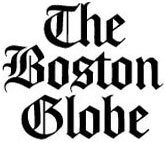By Robin Washington
March 7, 2019
In a Globe op-ed and at MBTA fare increase hearings, Boston City Councilor Michelle Wu suggested a solution to many of the woes plaguing the T: Make the system free.
Is she crazy?
In a word, no. Transit efficiency isn’t measured just by costs — whether borne by riders, benefactors, or taxpayers — but by how well the system works. In Boston, it doesn’t.
The reasons are obvious: broken subway cars, missed bus trips, ridership lost to Uber and Lyft, and even fewer riders if a proposed fare increase is approved.
But instead of raising fares, some transit agencies have eliminated them altogether. Others, like Miami and Baltimore, waive fares for specific routes or times. So does the MBTA, every year on First Night.
“The primary reason we open up the gates is for safety,” says T spokesman Joe Pesaturo. Yet his colleagues identify fare payment as a persistent impediment to quality service.
David Block-Schachter, the T’s former chief technology officer, identified fare boxes as the bottleneck that slows down everyone as riders pay at the front doors of buses and trolleys. “The best fare collection system is one that gets out of people’s way,” Block-Schachter said at a hearing last June.
Enter AFC2.0, the T’s new fare collection system, outsourced to transit and defense contractor Cubic Corp. for $723 million over 13 years. The new system promises faster boarding by allowing passengers to enter through all doors by swiping a Charlie Card, credit card, or cell phone on a fare validator. Cash won’t be accepted on vehicles.
T officials insist the changes will increase frequency of vehicles as well. But it just takes one confused rider to slow the system down.
So if payment is the problem, why not eliminate it?
That’s what Missoula, Montana, did.
“People can board from whatever door they’d like,” says Bill Pfeiffer of the totally free Mountain Line. Dwell time — the time a bus spends loading and unloading at a stop — has significantly decreased, he says. Ridership has gone up, too. Before implementing its zero-fare demonstration project in 2015, the Mountain Line carried 600,000 people annually. That grew to one million a year after fares were eliminated, and 1.5 million the next year.
Critics may point out that Missoula’s population is only 70,000 and the system’s budget is tiny enough to be paid for by a subsidy from the University of Montana, hospitals, nonprofits and local businesses. It’s hardly comparable to the MBTA, which carries more than half a million riders daily.
Perhaps a better comparison is Tallinn, Estonia, with 413,782 residents versus Boston’s 685,094. The city went fare-free in 2013, with 11 of 15 counties following suit. Initial reports vary, some counting a 3 to 14 percent ridership increase on Tallinn’s trolleys, trams, buses, and trains, others noting free transit may have attracted some who would otherwise walk. Significantly, Tallinn’s economics haven’t taken a hit; before going fare-free, collected fares only covered only one-third of the system’s expenses, slightly higher than the MBTA’s fare-to-operating cost ratio.
Obviously, the MBTA’s fare revenue — $671 million annually — will have to come from somewhere. But if the goal is improving efficiency, the T is taking a $723 million gamble to achieve it. Cities around the world are finding that eliminating fares is a far better solution.
Globe contributing columnist Robin Washington is a longtime transportation writer. He may be reached at robin@robinwashington.com or via Twitter @robinbirk.


 WordPress
WordPress